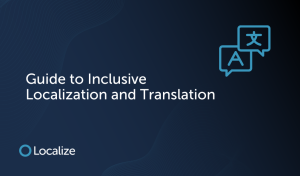It’s not uncommon for businesses to discover they are somehow reaching out to audiences they hadn’t intentionally targeted. This kind of international business could take the form of surprise orders or web traffic coming from outside of your targeted markets. Sometimes it might be difficult to pinpoint exactly why you are attracting attention from these geographies. However, this kind of activity can present your international business with new and exciting opportunities.
Surprise Orders
If you occasionally find yourself receiving an order from an overseas locale that you hadn’t meant to reach out to, you might welcome the sale. However, someone in your order fulfillment team will usually have to scramble to research the relevant market regulations for imports before the order can be shipped.
- Ideally, you should be prepared for these unexpected sales with a payment system and shipping service in place.
Strange Traffic
Maybe your international business has been surprised by web traffic patterns that don’t seem to make immediate sense. It’s particularly baffling if the traffic is coming from a market with a different language than the one used on your website. A low volume might be explained by ex-pat activity, but high volumes from unfamiliar markets could be cause for concern. Here’s what may be happening:
- If you’ve utilized web services based overseas, it’s not uncommon to see residual traffic from the same locales, even if you no longer use that supplier.
- SEO service providers and web designers often center their activities in their local areas. This means your international business could be registered in local directories even if you operate in completely different territories. You can attempt to rectify this by requesting the removal of your site from the relevant directories.
- If you’ve recently launched an ad campaign, check your targeting. You may have been careless about targeting your ad activity on your intended market.
Check the volume of international traffic your website is receiving by looking at your analytics dashboard. For Google Analytics, go to Audience/Geo/Locations. You could be surprised by what you discover.
Fake Traffic
Artificial online activity is generated by bots, click farms, and other software types that are sometimes illegally installed on your website. You can often spot this fake traffic because you receive many requests in a short period of time with an unusually high bounce rate and very brief session duration. Here are some reasons behind fake traffic:
- You may have been using a questionable provider to generate traffic. Low-value traffic producers are likely sourcing a high volume of useless traffic. You can determine the real worth of what you are paying for by keeping an eye on your analytics. Be particularly wary of high traffic volumes with low conversion rates that can be traced back to a particular country.
- A significant influx of traffic from unusual locations may also indicate bot activity, e.g., your English-only website suddenly gets a lot of traffic from Russia or China. So-called ‘ghost spam’ is fake referral traffic that wants you to click through from your analytics data to some other website, thus inflating that site’s user data in an unscrupulous fashion.
- Ghost spam traffic uses a fake hostname and often is gone from your analytics after a few days. However, in the meantime, it distorts your reporting. Check with your data analytics provider for a solution to filter out the worst offenders.

Image source: Moz
What If This Traffic Is Genuine?
Maybe the traffic means your site visitors are failing to convert because of something you have control over. Are you offering a payment method that these users feel uncomfortable with, or is shipping to this geographic area too expensive? Consider whether making some changes may help convert this traffic at a higher rate.
Plagiarism
Sometimes web activity is because your website has a rogue twin in another location. This is a special risk for brands with house-hold names but can also affect brands that aren’t as well known. Free services are available to help you monitor whether your content is being cloned.
You can also paste portions of your content into Google and see what is returned by searching. Google is quite good at identifying (and penalizing) the culprit just by pinpointing which version of the content was published first or has the most authority and genuine users.
- You can also initiate a Digital Millennium Copyright Act (DMCA) takedown notice with the top search engines in relevant markets.
How to Block Traffic
Sometimes you might decide to block web traffic from some destinations for the following good reasons:
- Traffic from some areas of the world consists of 99% bots, hacking attempts, or vulnerability scanners probing for a way to access the systems that power your site.
- You might need more time to reach compliance with regulations in a particular territory.
- It might not be feasible to serve customers in a particular location. Perhaps goods can’t reliably get to them via available delivery services, or it’s just too expensive to service customers in those locations.
There are several ways to go about blocking customers from some locations:
- Check if your hosting company offers this facility – not many do, but it’s worth finding out.
- Use a proxy service on your domain. Proxy services usually also offer other security benefits.
- It’s also possible to block traffic at the application layer. However, this may lead to a lag for all users of your website – using APIs (application programming interfaces) can minimize the lag.
- Use content distribution networks or website security that incorporate geotools such as Cloudflare to block certain countries from accessing your content. This is an appropriate solution if you have licensing concerns with respect to showing media content in a particular locale, e.g., the EU.

Image source: Cloudflare
Blocking all users from one particular territory may not be the best approach, and all blocking strategies tend to have drawbacks. You don’t want to disadvantage other users by slowing down your page loading times. Also, if you’re blocking traffic to your main website, make sure you’re not inviting that same traffic in through other channels.
Positive Targeting
Your analytics may show that traffic from some locales is more lucrative than from others. Maybe there are lower costs involved in serving these customers, or they tend to place larger orders. While you may not want to go to the extreme of excluding traffic from your less profitable locations, it’s always a good idea to target users from your more profitable areas.
Localize Your Content
Analyze your web traffic by user location to determine which areas are the most profitable and then aim to localize your site as much as possible to target users in those locations. There are a number of ways to do this.
- Concentrate on paid acquisition campaigns in your more profitable locations. Do this by targeting Google ads according to geography. You can do likewise with Facebook ads by way of advanced location targeting.
- Use language as another basis for targeting. You may discover that users who interact with your content in particular languages generate more profit than others. Bing and Google Ads allow you to target users by their language as well as their location. This is especially useful in complex language markets or ones with large numbers of expats.
International Business: Final Thoughts
If your site is attracting unanticipated volumes of international traffic, don’t panic. Whether the reason for the activity is benign or not, there are things you can do to address the issue or even benefit from it. Don’t ignore your web analytics. Instead, try to make sense of the traffic source and take advantage of any opportunities that unexpected traffic may provide in order to grow your international business.
Why Localize?
- Localize can provide you with the essential services necessary to translate and localize your content. So don’t let the opportunities you may find by analyzing your web traffic pass you by. Book a consultation with us to see how we can help your international business succeed.







